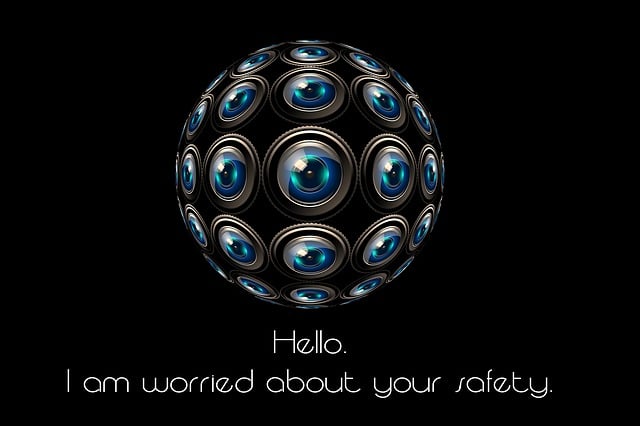License Plate Recognition (LPR) technology powers real-time video surveillance, transforming vehicle tracking with advanced image processing. It enhances traffic management, security, and law enforcement by accurately identifying and monitoring vehicles, enabling efficient vehicle movement data updates and improving safety through the detection of unsafe driving behaviors. Future advancements in computer vision aim to overcome challenges in diverse environments, promising substantial improvements for more effective real-time video surveillance.
“License plate recognition (LPR) technology is transforming vehicle tracking, offering unprecedented capabilities in real-time video surveillance. This advanced system identifies and captures vehicle registration details from live camera feeds, revolutionizing law enforcement efforts. From enhancing traffic management to aiding in criminal investigations, LPR provides invaluable insights. This article explores the intricacies of LPR technology, its role in real-time video surveillance, benefits for law enforcement, and the challenges and future prospects of implementation.”
Understanding License Plate Recognition Technology
License Plate Recognition (LPR) technology has emerged as a powerful tool in the field of vehicle tracking, enabling efficient and accurate identification of cars in real-time video surveillance systems. This cutting-edge technology employs advanced image processing algorithms to analyze and decipher characters on license plates, even under varying conditions such as low resolution, angle variations, and partial occlusions.
LPR systems work by capturing high-definition images or video streams from cameras strategically placed at intersections, parking lots, or other areas of interest. The captured data is then processed through specialized algorithms that use machine learning techniques to recognize and extract plate numbers. This real-time video surveillance capability allows for seamless vehicle tracking, enhancing traffic management, security protocols, and law enforcement operations by providing precise and up-to-date information on vehicle movements.
Real-Time Video Surveillance: The Role of LPR
Real-time video surveillance has become an indispensable tool in modern vehicle tracking systems, and License Plate Recognition (LPR) technology plays a pivotal role in this process. By leveraging advanced computer vision algorithms, LPR systems can accurately capture and read license plate numbers from live video feeds, enabling efficient identification and tracking of vehicles in real-time. This capability is particularly valuable for traffic monitoring, law enforcement operations, and parking management, where immediate vehicle recognition and location data are critical.
In the context of real-time video surveillance, LPR systems offer a level of precision and speed that traditional manual plate recognition methods cannot match. They can process vast amounts of visual data from multiple cameras simultaneously, quickly updating databases with new vehicle entries and facilitating seamless tracking across different locations. This streamlines operations, enhances safety, and contributes to more efficient urban mobility, making real-time video surveillance a game-changer in the field of vehicle tracking.
Vehicle Tracking Benefits for Law Enforcement
Vehicle tracking through license plate recognition offers significant advantages for law enforcement agencies. Real-time video surveillance capabilities enable officers to monitor and trace vehicles involved in criminal activities, enhancing their ability to prevent and solve crimes. By analyzing license plate data, law enforcement can quickly identify suspicious patterns, track known criminals’ movements, and respond to emergencies more effectively.
This technology streamlines traffic management, assists in collision investigations, and aids in securing public spaces. With real-time tracking, officers can make informed decisions during high-risk situations, ensuring swift and safe resolution. Moreover, license plate recognition systems contribute to improving overall road safety by facilitating the identification of unsafe driving behaviors and helping to enforce traffic regulations.
Challenges and Future Prospects of LPR Implementation
Implementing License Plate Recognition (LPR) for vehicle tracking offers immense potential in enhancing traffic management, security, and law enforcement capabilities. However, several challenges must be addressed to unlock its full potential. One significant hurdle is achieving high accuracy, especially in diverse environments where plate visibility might be obscured by weather conditions, aging plates, or angle of camera view. These factors necessitate advanced image processing algorithms capable of real-time video surveillance analysis.
Looking ahead, the future of LPR implementation promises substantial improvements. Advancements in computer vision and machine learning can lead to more robust systems, enabling accurate plate recognition even under challenging circumstances. Integration with smart city infrastructure, combined with real-time video surveillance capabilities, could facilitate efficient traffic flow management, reduce criminal activities, and improve public safety.
License plate recognition (LPR) technology has evolved to become a powerful tool in real-time video surveillance, offering unprecedented vehicle tracking capabilities. By streamlining law enforcement processes, LPR enhances safety and security measures. While challenges exist, such as privacy concerns and technological limitations, future prospects look promising with advancements in artificial intelligence. As LPR continues to refine its techniques, it will play an increasingly vital role in modern surveillance systems, ensuring a safer and more efficient transportation network.
